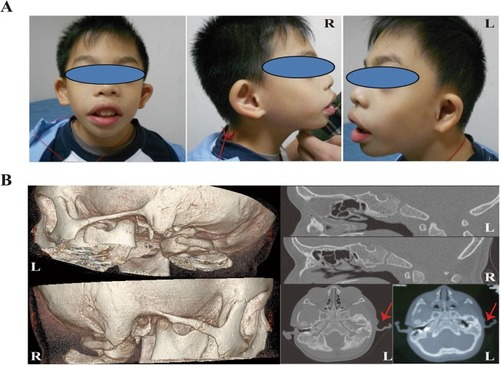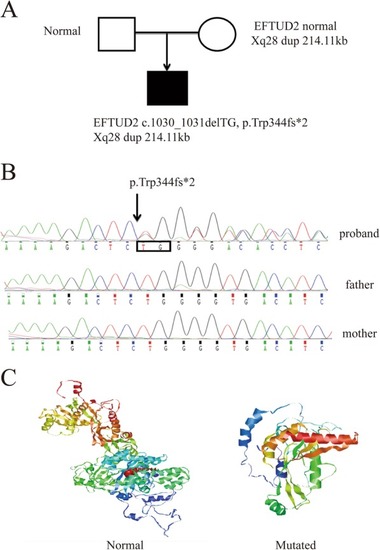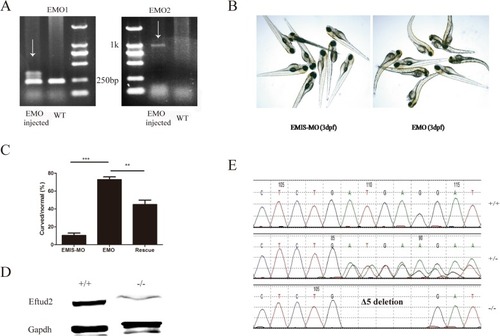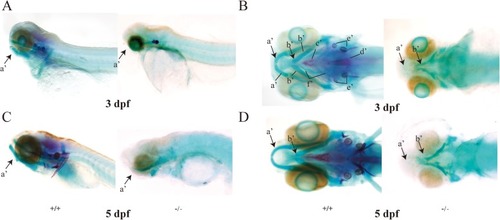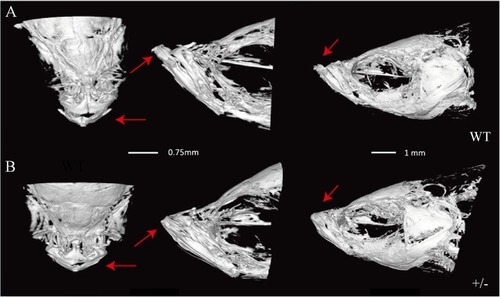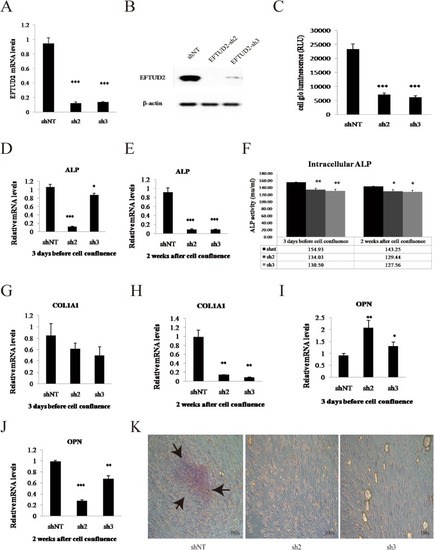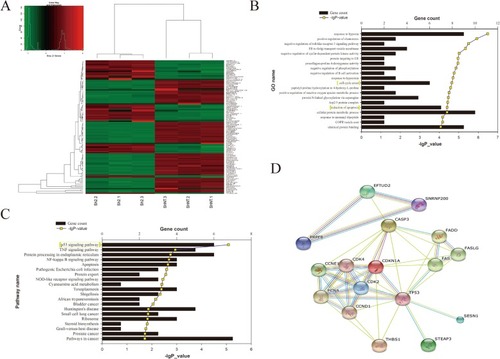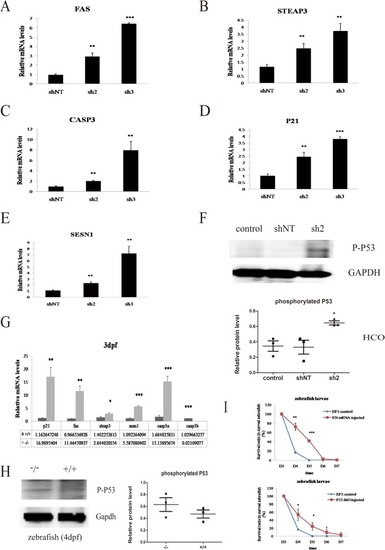- Title
-
EFTUD2 gene deficiency disrupts osteoblast maturation and inhibits chondrocyte differentiation via activation of the p53 signaling pathway
- Authors
- Wu, J., Yang, Y., He, Y., Li, Q., Wang, X., Sun, C., Wang, L., An, Y., Luo, F.
- Source
- Full text @ Hum. Genomics
|
Clinical presentation of the proband. |
|
Pedigrees and EFTUD2 variant identified by family trio whole-exome sequencing. |
|
EXPRESSION / LABELING:
PHENOTYPE:
|
|
Zebrafish subjected to PHENOTYPE:
|
|
Adult zebrafish with heterozygous PHENOTYPE:
|
|
|
|
RNA-Seq analysis in HCO cells. |
|
The p53 pathway mediates cell development in HCO cells and zebrafish. EXPRESSION / LABELING:
PHENOTYPE:
|

